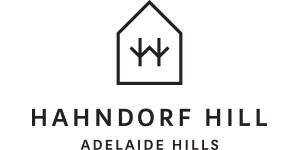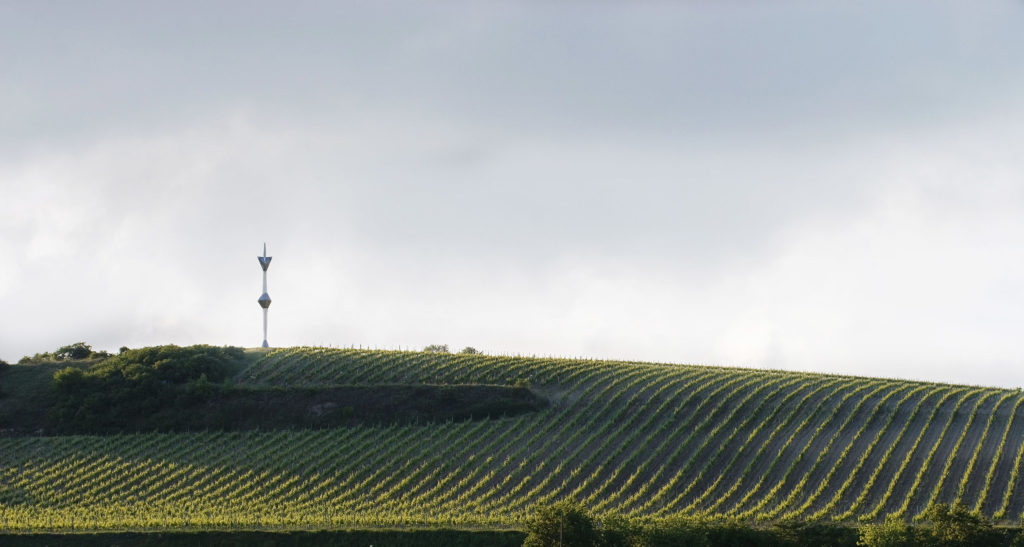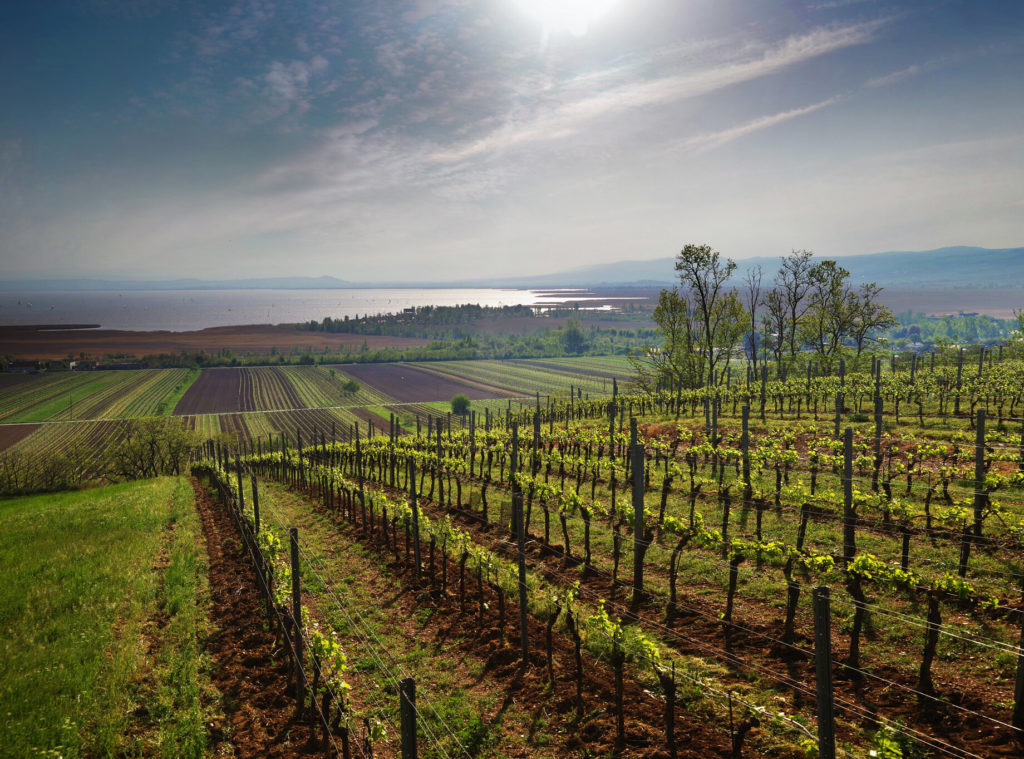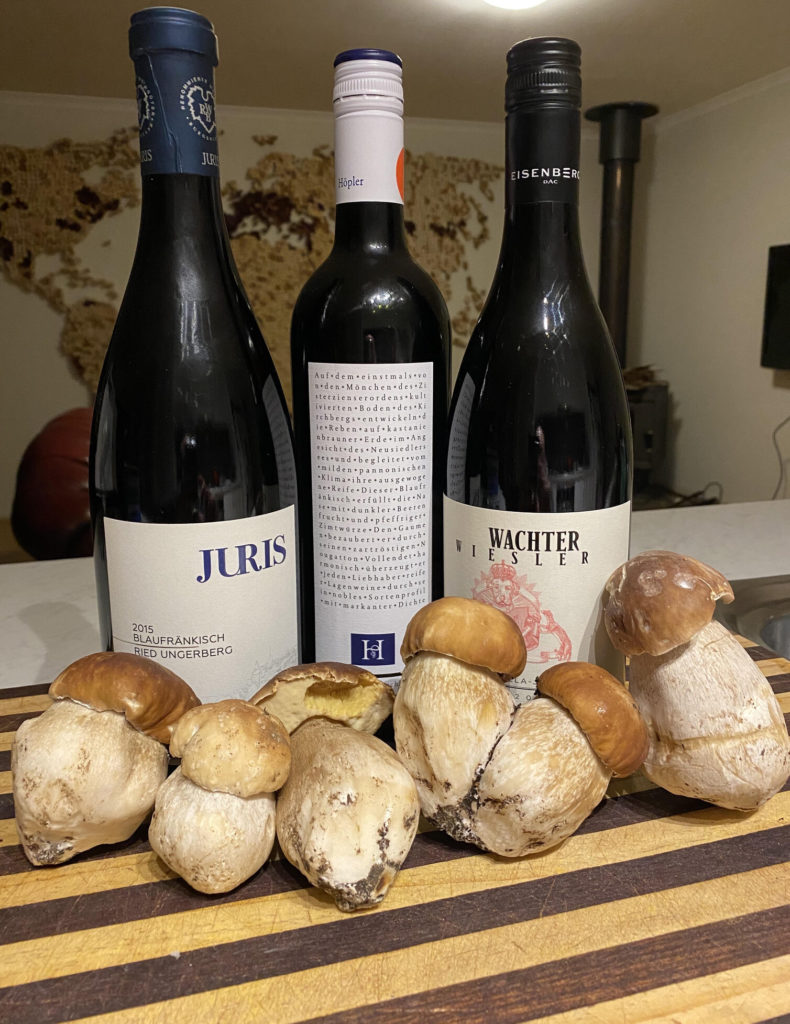
I am at an awkward age; I am young enough to see the value of social media but old enough to lament the often all-consuming influence it can have. I enjoy feeling connected to family and friends far away, especially in these isolating times; but I have also stopped counting the number of rich discussions and dining table debates that disintegrated after a single digital ding or ping.
These scales were momentarily tipped this week when the algorithms behind my Facebook page reminded me of some pictures and comments I had posted on my first trip to Austria in 2017; some supercomputer half a world away had put together a montage of my time spent in the Blaufrankisch powerhouse of Burgenland and even set this 60-second trip down memory lane to nostalgic music.
I think deep down I knew I had been manipulated and had a millennial been watching they would no doubt have been grinning from ear to ear; but despite this, by the end of the video I was in my cellar selecting bottles of Blaufrankisch to share with you, firm in the belief it was totally my idea.

The region of Burgenland is a broad rolling plain that has seen constant human habitation since prehistoric times. Over the last few millenia it has caught the eye of many tribal chiefs, Roman generals, religious zealots, a handful of emperors, one Führer and a Union of Soviet Socialist Republics. Much to the relief of its modern-day residents and visitors, the region is now held firmly in the bosom of the Republic of Austria and enjoys a rising level of prosperity.
There is evidence dating back to the Bronze Age of Celtic people harvesting grapes and making wine in what is now Burgenland, but as is often the case it was the Romans who initiated a systematic form of viticulture in Austria. Since then, the region has been ruled by benevolent visionaries and greedy tyrants; reaped bountiful harvests and been decimated by blight; suffered scandal and enjoyed global success for producing wines of power, presence and prestige.

Today Burgenland is home to a number of varietals but it is for Blaufrankisch that she is famous, maybe even synonymous. Let’s play a little word association: bacon-eggs, salt-pepper, Gruner-gorgeous, Blau-Burgenland! And before you say it; yes, I expect Carl Jung would have had a field day with me.
From the cellar I selected three wines that each proudly fly the flag for Burgenland but are distinctly different. Burgenland has six DAC wine regions, each of which vary slightly in topography and geology but all fall under the influence of the consistently warm climate. Most of Austria’s wine producing regions bank on their profound diurnal variation common to that latitude but Burgenland has two aces up its sleeve. The immense but remarkably shallow Lake Neusiedl helps to take the edge off the brutal summer sun, and the cool evening air that tumbles onto the plain from the mountains to the west both collude to smooth out the day-time high temperatures and night-time lows.
Burgenland has its share of grand old houses and vineyards that have for generations proven themselves to be sites of consistently excellent fruit. For this article I selected two wines from especially prestigious single vineyards and one from a DAC region that has achieved extra recognition.
The Kirchberg is an especially pretty vineyard draped across a gently undulating slope that is perfectly positioned to drink in the warm sun’s rays by day and relax in the cooler air that pours off the neighbouring Leitha Mountain range by night. Originally planted in 1203 by Cistercian monks (an order with Burgundian roots), the site is now under the stewardship of the Höpler family and provides the fruit for their signature Blaufrankisch.
The Höpler Kirchberg Blaufrankisch will only be made in exceptional years and the 2015 is the first since 2007: that’s nine years between drinks! It is that commitment to quality and integrity which has made the Höpler wines so consistently delicious and highly rated. Winemaker Christof Höpler is now head of the family business and has said that the six-week long heat wave in 2015 paired with a cool autumn and fortuitous rains were the perfect conditions to create a full-bodied Blaufrankisch with ‘modern’ appeal – and thus the 2015 Kirchberg Blaufrankisch was born.

Hand picking late in the vintage and a full 18 months in 2/3rds new French oak has allowed this wine to fill out to its full potential. Plump red-black fruits, vanilla and tobacco fill the nose and carry through to the palate where they are teamed with earthy, nutty and gentle spice characters. This is a full-bodied wine but is not remarkably heavy; it has bearing but is no bully. Its cheeky confidence puts me in mind of the pirouetting hippos in Disney’s Fantasia; substantial but sure-footed, balanced, poised and possessing a grace and elegance all its own.
I found this wine comforting, approachable and pleasantly familiar. I paired it with seared beef fillet under a creamy porcini mushroom sauce and mashed sweet potato; the earthy porcinis and rare beef perfectly matched the ripe red fruits and cinnamon spice of the 2015 Höpler Kirchberg Blaufrankisch.
The Juris Winery is located near Lake Neusiedl in the famous winemaking town of Gols, and is owned by the Stiegelmar family who has been practising viticulture here since 1571; but don’t think for a second that the family is using their four and a half centuries of tradition to rest on its laurels. Current head Axel Stiegelmar and his father Georg have worked extremely hard to stay on the cutting edge of winemaking technology and world’s best practice. Georg Stiegelmar pioneered the Austrian use of maturation in small oak barrels and also initiated three landmark changes to Austria’s notoriously strict wine laws.

Today the family sources fruit from some of the region’s highest profile sites, including the famous Altenberg vineyard I detailed in a previous article. Today I would like to dive into their 2015 Blaufrankisch from another of Gols’ premium sites: the Ried Ungerberg.
The Ungerberg vineyard sits close to the banks of the massive Lake Neusiedl and is characterised by significant pockets of limestone and thick deposits of clay-rich soil. The wines that call this block home all share a firm tannin structure and minerality coupled with the warm Burgenland signature of primary fruits of red-black plum and cherry. The 2015 Juris Ried Ungerberg Blaufrankisch sits in the glass like a ruby prism, bathing its surroundings in a velvety violet hue. The nose is smoky, savoury and spicy and reminds me of the good old days when we could lounge in a comfy booth at a fine restaurant. The palate is balanced expertly between red-black stone fruits like cherries and plums, and woody spice, cool minerality and rich vanilla.
It is obvious the 2015 Juris Ried Ungerberg was conceived, cultivated, vinified and nurtured by winemakers of unimpeachable integrity and dedication. It speaks of its time and its place and I rejoiced in both, but mourned sharing the last glass. Though not obviously kin there are parallels to be drawn with the Höpler Kirchberg Blaufrankisch; it is serious yet soothing, august but approachable and unselfconsciously stately. Regional typicity, shared philosophies or primal Gaian DNA, call it what you will, but the link is undeniable.
The DAC wine region of Eisenberg (formally known as Südburgenland) sits on Burgenland’s southern border; the Pannonian influence on the climate is strong but winemakers in Eisenberg also benefit from cooler air flowing in from the neighbouring region of Steiermark (Styria) to the south. This cooler average temperature in an otherwise warm region makes the wines of Eisenberg easily distinguishable from those of Neusiedlersee or Mittelburgenland, a distinction that was formally recognised in 2008 when they were granted full DAC status. The cooler average temperatures and a geology dominated by crystalline rocks on the sloped sites and silty iron-rich clays on the lower blocks, gives the Blau’s of the region a signature earthiness and minerally spice.

Eisenberg, with its curious climate and irregular geology, has long attracted winemakers with a maverick streak and passion for the unconventional. Christoph Wachter of Wachter-Wiesler seems almost custom made to succeed in a region that could test the patience and creativity of most; he really does ‘walk the walk’ when it comes to stripped-back minimalism. The ethos at Wachter-Wiesler is to embrace their terroir and create wines that transport Eisenberg’s unique character and beauty all the way to your glass with no middle man or static.
The winery’s 2013 Béla Jóska Eisenberg DAC Blaufrankisch was handled mostly by gravity, thereby reducing pump handling of the juice before a long cool wild ferment and rest in large, almost neutral wooden barrels. This deference to nature and the will of the vineyard have produced a finished product as earthy as any Burgundian and delivers as many dark berries as a Côtes du Rhône lover could desire. I am sure this wine will polarize: if you fancy pure bright red fruit with no background noise this wine is not for you; but if you love walking through the woods after rain, have ever made your own biltong or prize the funk of the Basket Range, buy this wine.

I very much enjoyed my time in Burgenland and look forward to drinking my way across her ancient rolling landscape again one day. To call the region a melting pot would be an understatement; for thousands of years people have come from far and wide to make a life here and the cumulative effect is profound. As the prejudices of antiquity slowly yielded to contemporary preferences, the land was tasked with keeping up and much was asked of it. First wild indigenous varieties were prized, then Roman viticultural protocols and later the French varietal influence took precedence; now they have completed the circle and are once again listening to – rather than imposing upon – the gentle rocky slopes and rich lowlands.
Varieties such as Blaufrankisch, Zweigelt and St Laurent planted by the grandfathers of today’s winemakers are enriching dining tables across the world, lubricating debate and inspiring discussion once more – that is, of course, until someone’s phone dings.
Prost! Jack.

